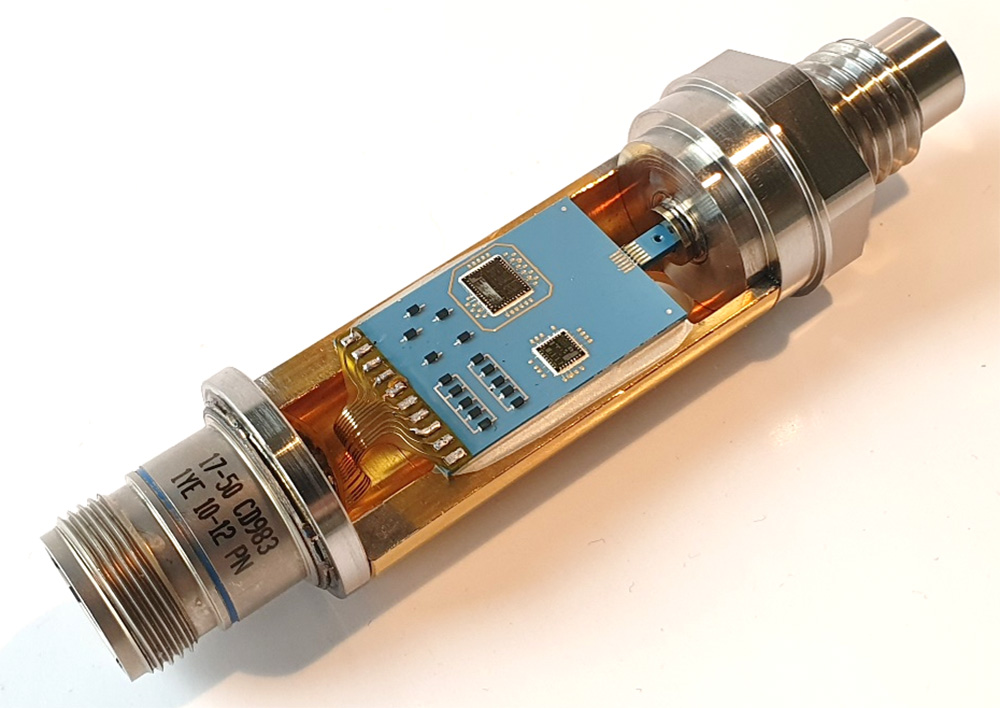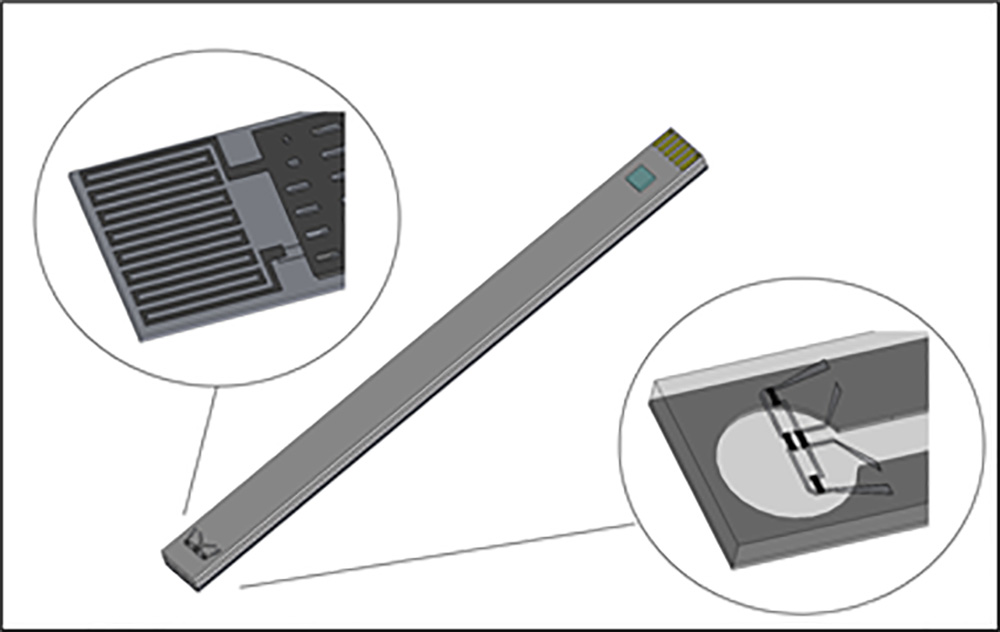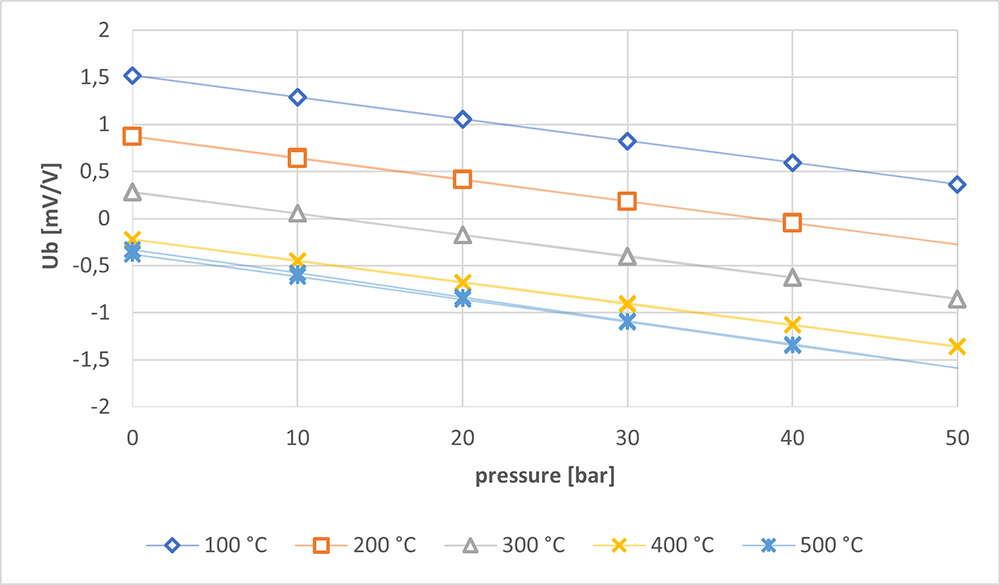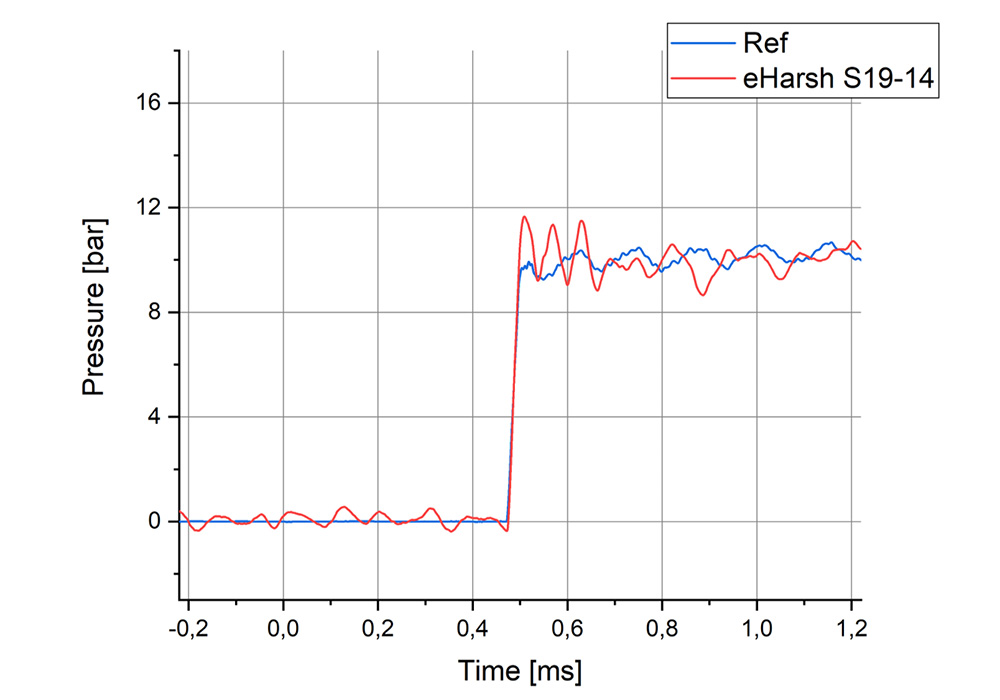

Robust and reliable sensors are essential for condition monitoring of engines and turbines. They allow process control to be optimized, energy efficiency to be increased, exhaust gas emissions to be reduced, and service intervals to be extended.
As part of the Fraunhofer lighthouse project "eHarsh", a high-temperature pressure sensor with integrated electronics for the temperature range up to 500 °C was developed. The integration of electronics makes it possible to leverage potential in terms of miniaturization and reliability. Furthermore, the modular approach in combination with the utility-based ceramic manufacturing technologies unlocks cost advantages.
The sensor was specially designed for use in the compression area of turbines and engines. The harsh environmental conditions result in special requirements. These include high ambient temperatures (up to 300 °C, at sensor tip up to 500 °C), strong vibration loads (50 g, 50–2000 Hz), high static pressures (50 bar) and dynamic pressure changes (1 bar, 1 kHz).
The sensor consists of two modular housing components. The first housing component encases the rod-shaped sensing element. The second housing component carries the circuit board with the evaluation electronics. The sensor element is based on ceramic LTCC multilayer technology (Low Temperature Co-fired Ceramics). Withstanding harsh environmental conditions is the advantage of LTCC ceramics and, due to their complex design, a high integration density can be achieved.
At the element tip, the piezoresistive resistance elements are placed in the form of a Wheatstone measuring bridge and, in combination with the membrane-based deformation body and a reference pressure compartment, record the absolute pressure. The ceramic-integrated Pt100 resistor structure enables parallel recording of the temperature at the element tip. The rewiring of the sensor structures takes place in a ceramic-integrated manner in the direction of the rear contact pads. The rod-shaped geometry allows for, among other things, the hermetic fitting into the sensor housing and the reduction of the temperature in the contact area. At the same time, ceramic integration of the sensor structures represents a highly reliable technology compared to semiconductor-based chip solutions.

